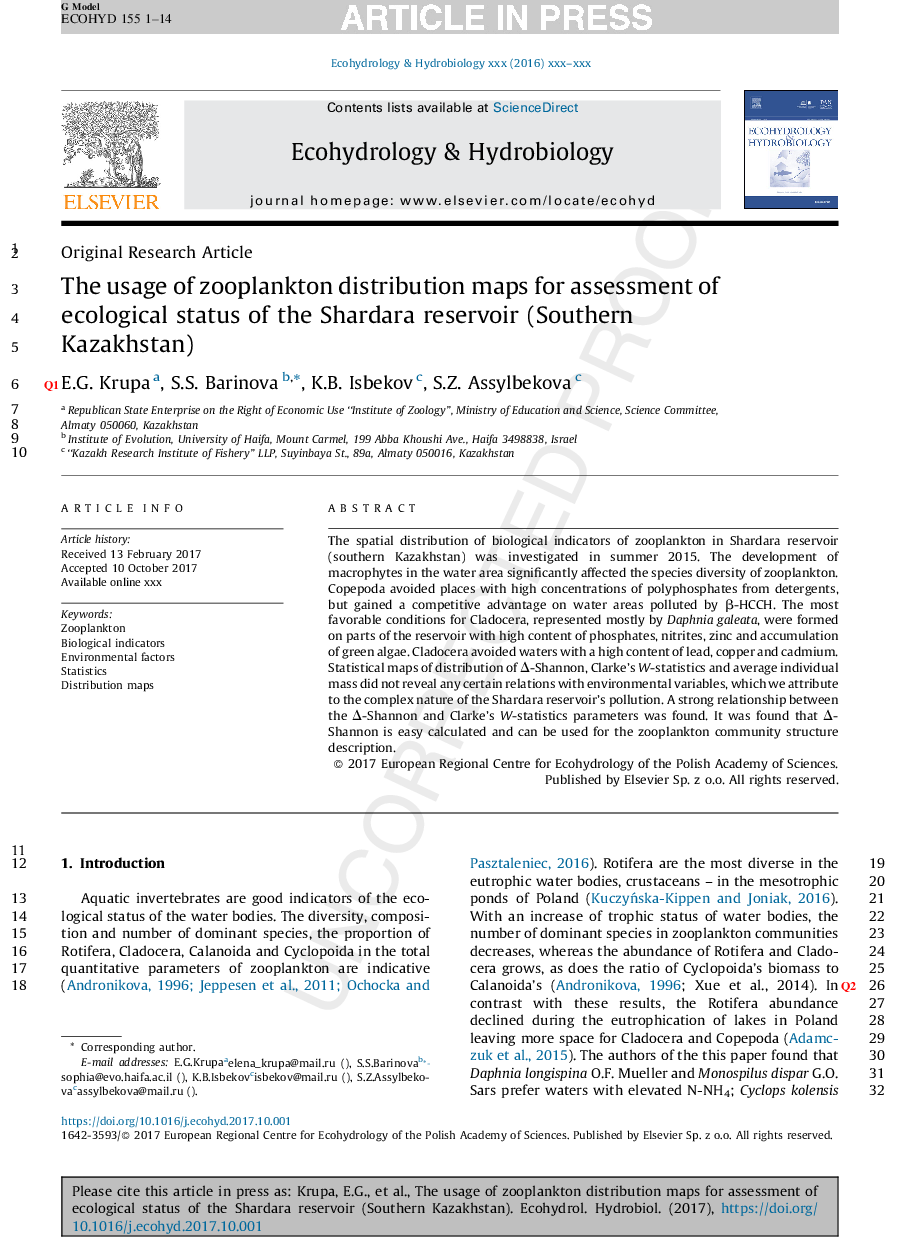| Article ID | Journal | Published Year | Pages | File Type |
|---|---|---|---|---|
| 8847673 | Ecohydrology & Hydrobiology | 2018 | 14 Pages |
Abstract
The spatial distribution of biological indicators of zooplankton in Shardara reservoir (southern Kazakhstan) was investigated in summer 2015. The development of macrophytes in the water area significantly affected the species diversity of zooplankton. Copepoda avoided places with high concentrations of polyphosphates from detergents, but gained a competitive advantage on water areas polluted by β-HCCH. The most favorable conditions for Cladocera, represented mostly by Daphnia galeata, were formed on parts of the reservoir with high content of phosphates, nitrites, zinc and accumulation of green algae. Cladocera avoided waters with a high content of lead, copper and cadmium. Statistical maps of distribution of Î-Shannon, Clarke's W-statistics and average individual mass did not reveal any certain relations with environmental variables, which we attribute to the complex nature of the Shardara reservoir's pollution. A strong relationship between the Î-Shannon and Clarke's W-statistics parameters was found. It was found that Î-Shannon is easily calculated and can be used for the zooplankton community structure description.
Related Topics
Life Sciences
Agricultural and Biological Sciences
Agricultural and Biological Sciences (General)
Authors
E.G. Krupa, S.S. Barinova, K.B. Isbekov, S.Z. Assylbekova,
